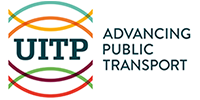
Electric buses offer the opportunity to propose a radical change in the bus design; reasons rely on technical, commercial and symbolical attributes of a bus system. The architecture of the vehicles must be reviewed to integrate new components (e.g. batteries) and there is the opportunity to improve the capacity and interior spaces for travellers. Bus design innovations have been very limited if compared to cars and trams - with the exception of specific vehicle classes such as BRT or mini-buses - and symbolically, the bus exterior should express its new nature, for users and non-users.
Within EBSF_2 a design working group started activity from the beginning of 2016 with the aim to address a strategic question: can we express an electric bus as a new urban object in light of the key opportunity offered by the energy transition? The group is being led by the UITP Design and Culture platform, together with public transport designers from RATP, MAN Truck & Bus AG, Yellow Window and Attoma, which represent product, service, information design sectors and bus industry.
As a first step, several electric buses already available in the market have been analysed in terms of design features applied to both internal and external layout, with the research objective to investigate the state-of-the-art of electric bus design by providing an overview of bus solutions different for size (midi, standard, articulated), propulsion technology (standard electric, plug-in, hybrid plug-in) and manufacturer. Electric buses often still feature a classic bodywork with batteries integrated in the roof without taking into account the styling lines and the silhouette of the vehicles with the obvious result of unappealing finish. When more contemporary bodywork are elaborated, frequently design cues from tramways are used to add perceived quality values; this mainly applies to articulated buses. Overall, the equipment chosen by the manufacturers are quite basic when compared to the new generation of tramway or metro; Manufacturers seem not to adopt a semiotic or stylistic approach concerning the design codes and references the appearance of an electric bus can exploit. High investment costs, which return is very difficult due to sale volumes, as well as the lack of clear demand trends and the scarcity of resources made available to operators or authorities to renew the fleets are behind this.
Beyond the consideration of the bus as an object (spaces, layout, product design) it is of utmost importance to integrate user behaviors patterns in the new e-bus design guidelines. In fact, the daily experience of this transportation mode is also determined by the social and cultural practices that happen every day on the bus as a place of life. A visual survey of user behaviors observed into European networks has been performed to cluster patterns of users, socialization and communication practices on board. Each category raises specific challenges as well as opportunities to be addressed by designers to promote a new customer experience of the bus.
All of the above allowed the working group to identify the most promising domains in need of new design specifications to change the image of the bus beyond its pure technological transformation. Identity, accessibility, information, publicity are the key working areas dealing with the bus experience in the urban space which is indeed complementary to the experience on board, which relies on the driver / passenger interface, space perception, augmented services, comfort and security and safety.
The multi-stakeholder composition of the EBSF_2 design group as well as the involvement of relevant UITP working bodies such as the Design & Culture Platform and Bus Committee, ensure the analysis of all of the above features will effectively consider the point of view of passengers, cities, operators and manufactures to feed the specification of an innovative electric bus concept. The outcome of the analysis will be merged to elaborate a Design Charter for new electric buses, consisting of illustrated chapters to propose design principles the manufacturers can mix with their own brand standards to produce vehicles. This will be a first important step to foster the opportunities created by electric propulsion in making buses not only clean, but also more attractive.
About UITP
The International Association of Public Transport (UITP) is a passionate champion of sustainable urban mobility and is the only worldwide network to bring together all public transport stakeholders and all sustainable transport modes. We have 1,400 member companies giving access to 16,000 contacts from 96 countries. Our members are public transport authorities and operators, policy decision-makers, research institutes and the public transport supply and service industry.
UITP member companies in North America include some of the region’s largest operators in metro (New York, Boston, Washington, Montreal and Toronto) and light rail systems (Phoenix, Salt Lake City, Honolulu, Edmonton and Vancouver). UITP opened its first office in North America in New York City in 2015 to support the growth of urban transit in the region and will hold its flagship event, the Global Public Transport Summit, in Montreal in May 2017. Find out more about UITP’s activities in North America.




Comments
There are no comments yet for this item
Join the discussion